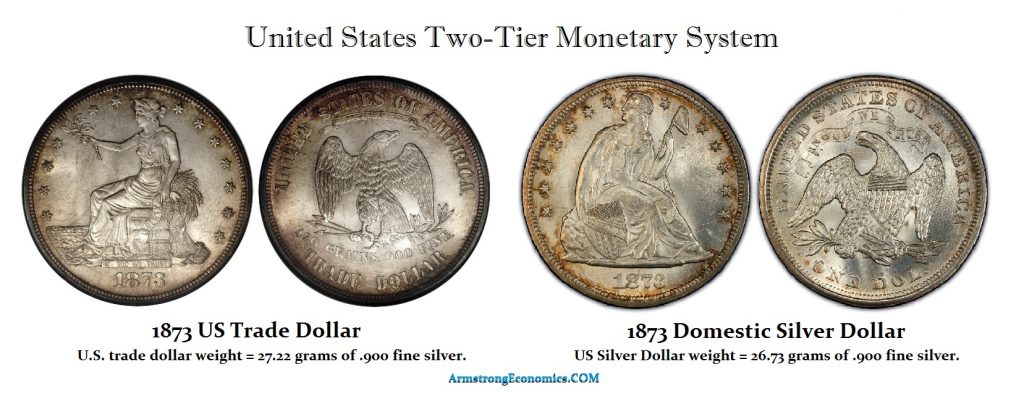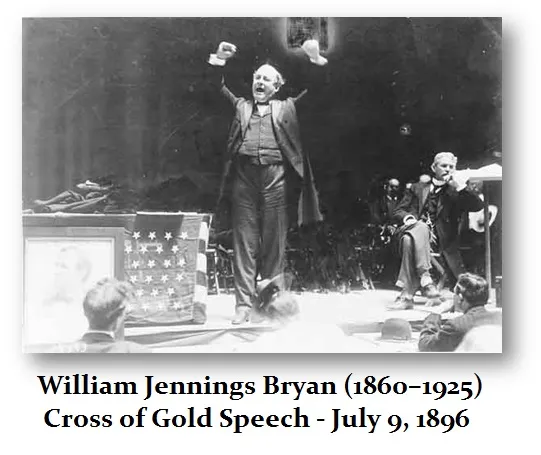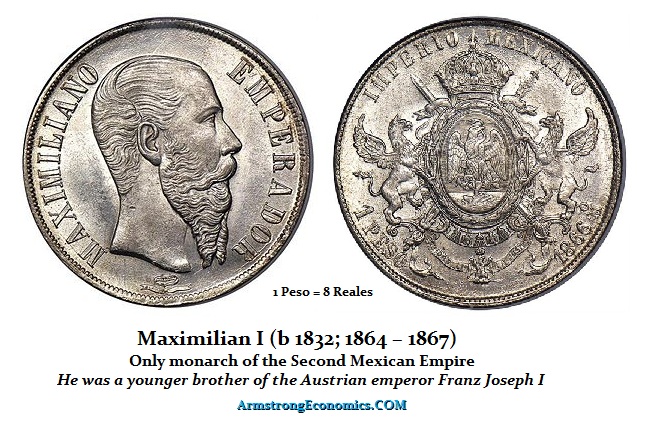Trump & China Trade Deal – Cyclically On Target? When Mexican Coins Traded at a Premium to America’s
QUESTION: Marty; Are there any cycles dealing with the trade dispute with China that are relevant?
OP
ANSWER: Actually, yes. The United States created a two-tier monetary system in 1873 to accommodate trade with China who was on a silver standard rather than gold. The actual timing is 17 intervals if the 8.6-year frequency of the ECM, which brings us to 2019.2 (March 19th, 2019). The US began to mint two types of silver dollars. The “Trade Dollar” was used to make payments to China for their standard was different from the West. The idea was promoted by the silver miners because the price of silver began to decline due to increased mining efforts in the western United States.
The silver miners effectively donated huge money to the Democrats to support the price of silver, which ended up nearly bankrupting the United States by 1896 and gave the Democrats the name “Silver Democrats.” It was the presidential election of 1896 in which William Jennings Bryan, the Democratic candidate for president, made his fiery speech that the cancelation of the silver mandates during the Panic of 1893 placed the United States exclusively on a gold standard. The Democrats stood against gold and sought to overvalue silver to satisfy the silver miners who were funding the Democrats back then.
The first trade dollars were struck in 1873, and the majority of the coins were sent to China. Curiously enough, as they began to flood the economy, the coins were officially demonetized in 1876 becoming the first US currency to actually be canceled. Nevertheless, the coins continued to circulate. The actual production ended in 1878. The trade dollar was re-monetized when the Coinage Act of 1965 was signed into law. The main coin in world trade had been the Spanish 8-reales. This became the basis of the American dollar. The Chinese had grown accustomed to the Spanish silver coins and this became their standard. Lacking the true ability to read Western languages, the Chinese were very sensitive to any changes in the coin’s design. Therefore, they were reluctant to accept any coin that was unfamiliar to them. The American silver dollar, 7.5 grains (0.49 g) lighter than its Spanish pillar dollars, which made them unacceptable in Asia. This was the reason for American merchants who had to trade only in Spanish coins during the 1800s which were carrying a premium to American coins.
It was in 1866 when the monetary system in Asia went into chaos. Maximilian I (1864 – 1867) was the only monarch of the Second Mexican Empire. He was a younger brother of the Austrian emperor Franz Joseph I. Maximilian traveled to Mexico and declared himself Emperor of Mexico on April 10th, 1864. He changed the monetary system from reales to peso. The historic 8 reales suddenly became 1 peso in 1866 with his portrait in the European tradition. This altered the Mexican pieces that were recognized in trade to a premium over even the US dollar. Therefore, starting in 1866, this design change caused widespread nonacceptance of the Mexican coins in China. This simple design change altered the coin which had been accepted throughout Asia as the standard.
This is the backdrop to how the Financial Capital of the World slipped through the reign of power from the Spanish to America. Most people have no idea that Mexican coinage was more valuable than America’s prior to 1866.




